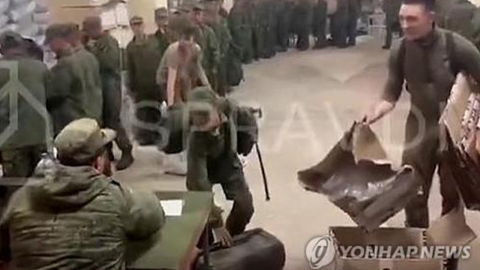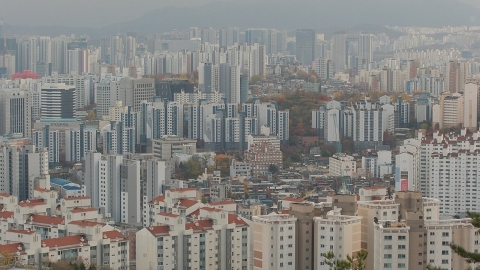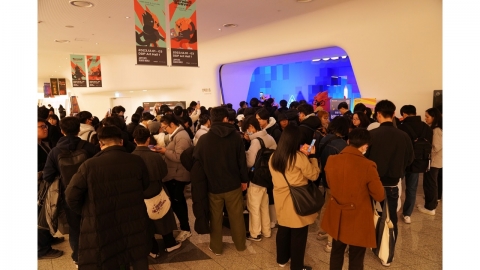■ Starring: Professor of Safety Engineering at Hameun-gu District
* The text below may differ from the actual broadcast content, so please check the broadcast for more accurate information. Please specify [YTN News UP] when quoting.
[Anchor]
There have been a series of accidents due to heavy snow in many parts of the country. I'm worried because it's snowing all night in the central part of the country today. I'll look into the countermeasures. He is a professor of safety engineering at Hameun-gu District. Please come in. Yesterday, there were a series of accidents in which facilities collapsed as snow continued to accumulate. There was also damage such as the collapse of the market's roof and the shed. If you look at the screen, you can see us behind us.There were many cases where the steel bars were completely bent. How much do you think it weighs?
[Hameungu]
Now, many viewers are unexpectedly learning about snow forms called wet snow. It's usually a concept of the lowest volume per cubic meter. With this amount of snow, we can estimate the weight of the snow like this, about 300kg per unit area.
So when we usually say that there is about 50cm of snow on an area of 100 skincare meters, that is, about 30 pyeong or more, about 5 to 6 tons. The reason why there's a range is because the weight is determined by how much moisture there is. So I can tell you that it will be affected by a load of 5 to 6 tons.
[Anchor]
There were many places where more than 40cm of snow was accumulated yesterday, so I think it was that heavy. The roofs of the buildings in the wholesale market you're looking at are sandwich panels. Are sandwich panels more vulnerable to weight?
[Hameungu]
That's right. Basically, it's very likely that sandwich panels or buildings that use these materials are temporary structures. In other words, there are many structural calculations that are designed outside of these things, so most of them are not known, but there is a basic snow load.
In each region, especially in Korea, Gangwon-do has a lot of snow, so Sokcho has 2 kilonewton, that is, 2 kilonewton per unit area. If you convert this into kg, it's about 200 kg per area and per meter. This is the basic snow load.
The biggest reason why many sandwich panels and these buildings are collapsing and turning into curves is that most of them are flat shelves or sloping roofs, but they don't exceed 15 degrees. So it's a kind of continuous snowfall, accumulation, and these are the modes in which the load is concentrated, so the structural calculations, like the sandwich panel you just mentioned, are continuing to collapse in these buildings that are weak and poor.
[Anchor]
There are a lot of structures in the city that are sandwich panels right now, but isn't there a case where snow accumulates and melts and freezes? Will this add more weight? What do you think?
[Hameungu]
That's right. Of course, freezing itself won't add to it, but there can be a lot of things like this that stick together when it snows. So rather than the change in the load, there's a lot of concentration, so in other words, if the snow is distributed flatly per area, we divide this load. Because it needs to be calculated per area. But when these things melt, they're probably driven to the point where they're fixed, and they're driven to the lower end, so they can show this tendency to concentrate the load.
[Anchor]
You have to be careful. Yesterday, there were many accidents where trees broke and fell, and in this case, isn't it an accident that suddenly hits? Is there a precursor phenomenon that I can know in advance?
[Hameungu]
I think this is the most painful part. In fact, we can always predict the phenomena of pine trees, especially trees, that break because they cannot beat the snow. Basically, trees in the sloped area, trees are basically inclined, especially utility poles or wires passing near these trees, and those things can be repaired in advance.
So, people in many areas are filing complaints about those parts. These are the parts that I hope that local governments or places like this can respond appropriately and quickly. To add one more thing, there are many accidents that go beyond common sense to dismiss as a lot of very humid snow, so our society needs to pay attention to those areas.
[Anchor]
It is said that the Korea Meteorological Administration has introduced a snow weight forecast since December last year due to a series of damage caused by wet snow. But it's not being done nationwide.
[Hameungu]
That's right. As far as I know, Gangwon-do, which was originally severely damaged, and such parts are excluded. In fact, it is known that if you listen to the weather forecast, it will snow heavy, and in the current situation, it is known that the forecast is being made nationwide to some extent. In fact, it seems necessary to pay a little more attention to how much reliability these things are predicted.
[Anchor]
Then, if the Korea Meteorological Administration predicts heavy snow, will local governments also need to organize their surroundings?
[Hameungu]
That's right. In the end, the Korea Meteorological Administration (KMA) is based on 1 millimeter of water equivalent. So when you say that it contains about a millimeter of moisture, it is expressed like this, and as the anchor said, it needs to be supplemented in the next step so that these things can be measured nationwide and alerted.
[Anchor]
There were also a lot of road accidents that slipped in the snow. Snow removal work was partially carried out yesterday, and a lot of snow has melted on the big roads, but as the temperature drops below zero today, the melted snow freezes again, and there are many concerns that icy roads will be created again like this. What do you think?
[Hameungu]
That's right. Basically, the drainage capacity of the road and things like that. So, because it was designed with that assumption, it seems unlikely that it will become a snow-removed part, or ice sheet, on a large part of the road. For these roads that are not missing now, that is, these sections that are regularly frozen, if they fall below zero, the number of such freezing sections is expected to increase significantly.
[Anchor]
When driving in the snow, there is also a story that it is safe to follow the road that the car in front of you, that is, the wheel marks of the car in front of you, is this right?
[Hameungu]
Sometimes it's right. Sometimes you can say it's wrong. Basically, in a situation where snow is falling and in the initial situation, as you said, it is a situation where it is reasonably less slippery for the preceding vehicle to follow the past trail. However, it becomes hard over time, and as you said, there is a very high possibility that the ice will form. In this case, it can be said that it is more advantageous to enter with eyes without tire wheel marks.
[Anchor]
Even if there is a wheel mark on the car in front of you, if that part is frozen, you shouldn't step on it. I think there will be other precautions when driving on snow or icy roads. What is there?
[Hameungu]
Basically, when snow falls, snow chains or snow tires can help. However, when snow does not snow and ice sheets are formed, snow chains and things like this tend to be slippery. So it's most important to use these things in the right place.
And when you're actually driving in places like uphill and downhill, especially in the case of downhill, it's better to use the engine brake as much as possible to proceed. When you actually enter the freezing section, it may not be called steering. In this case, if I put the axle in a straight line toward the direction of sliding, the possibility of this steering increases. So you'd better use those tips.
[Anchor]
We have a video, so we need to look at it again. While driving, there is a lot of snow piled up, and there are times when the snow clumps on the traffic lights or on the signboards and falls. It's that kind of screen you're looking at, and it was a scene where snowballs fell like that while driving on the road, and the window of the driver's seat was completely destroyed. I think it would be very embarrassing because this is actually an unpredictable accident, what about this case?
[Hameungu]
That's right. It's actually unpredictable. First of all, it can be said that the best way is to slow down, turn on the emergency light, and move quickly to old dogs or something like this. In fact, if it is an accident that falls like that, it will be difficult for the driver to fully predict it.
[Anchor]
There are also cases where snowballs fall from trees. I think we should be careful when passing under the tree. What do you think?
[Hameungu]
That's right. One of the parts that cause a lot of damage is that the ones in the tree fall off or the tree itself breaks, so it can be said that the best way is to avoid detouring and avoiding.
[Anchor]
It's calcium chloride, which is often used as a snow-melting deicing agent, but if you spray it too much, the road conditions will deteriorate, and vehicles will also corrode. Is it necessary to check roads and vehicles after it snows so much?
[Hameungu]
That's right. As you mentioned in the case of calcium chloride and sodium chloride, it is causing corrosion of the vehicle. However, calcium chloride is actually the most cost-effective snow removal agent, so in a way, it is inevitable to use it in the part of use. So if you've been driving on a section with snow removal, it'll be helpful for vehicle management to remove calcium chloride and these things by washing the car at least within a week.
[Anchor]
As you said, snow removal is the best thing, so I can't help but use it, so is there any way to compensate for the shortcomings?
[Hameungu]
If you look at how much our society can afford to administer snow removal, these products, which are now said to be eco-friendly goods, the cost goes up by as much as 5 to 10 times higher. In the case of recent roads, there are already many areas where they say they will remove snow with heating wires from the design stage, but in reality, snow removal agents that are as effective as calcium chloride will be developed in the future, but it is the best way so far.
[Anchor]
Even if you look at the record heavy snow this time, the weather is unpredictable, so you don't know when and how you will meet such heavy snow and unusual weather, right? How should the government and each agency prepare for disaster response in the future?
[Hameungu]
As I told everyone earlier, I think it's a little problem that our society is accepting to some extent that there is a lot of damage when this custom, for example, comes to about 40cm.
These are predictable in advance, and there seems to be a need for various preventive measures to be implemented quickly in advance for areas that are at risk in the area at the local government level.
[Anchor]
I see. Let's stop here. Ham was with a professor of safety engineering at the Seoul area. Thank you for talking today.
※ 'Your report becomes news'
[Kakao Talk] YTN Search and Add Channel
[Phone] 02-398-8585
[Mail] social@ytn. co. kr
[Copyright holder (c) YTN Unauthorized reproduction, redistribution and use of AI data prohibited]
Society
More- Lee Woong-yeol, honorary chairman of Kolon, is not guilty in the first trial of "Suspicious Invossa."
- "I'm out of car" asked for help..."SUV Club" dispatched through heavy snow.
- "Give me back the old KEPCO site"...Bongeunsa's defeat has been confirmed.
- "My house, too?" More than half of foreign landlords are Chinese.

![[Exclusive] Workers crash at Lotte Hotel World...one dead and one seriously injured](https://image.ytn.co.kr/general/jpg/2024/1129/202411291023597932_h.jpg)


![[Focus Y] "Why aren't you doing anything for me?" vs. "I did everything for you". The workshop.](https://image.ytn.co.kr/general/jpg/2024/1129/202411291034040696_h.jpg)




